Complete guide to Hagerman Fossil Beds National Monument in Idaho, including things to do, history, directions, hours, and so much more.
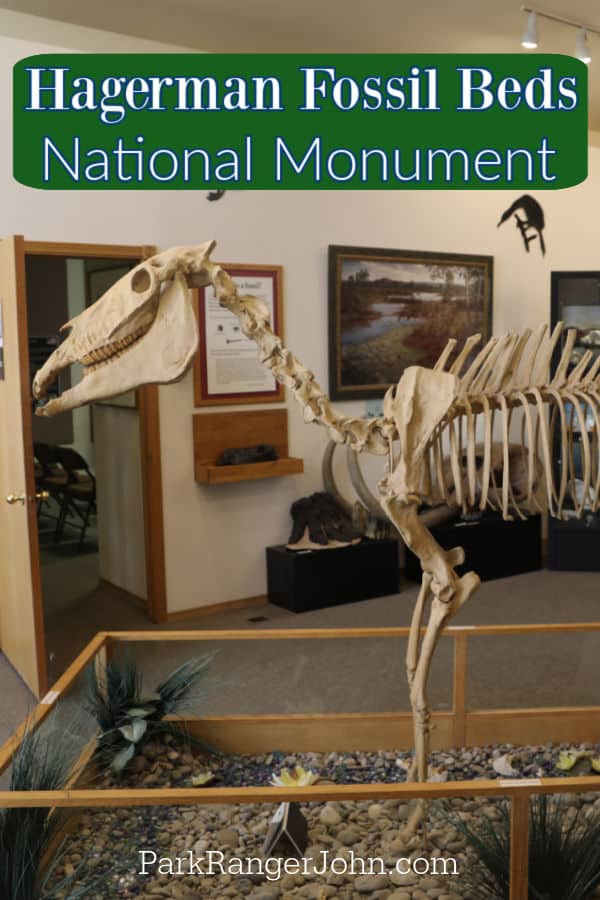
Hagerman Fossil Beds National Monument
Hagerman Fossil Beds National Monument in southern Idaho preserves and protects one of the largest fossil beds in the country. The site is known for the Hagerman Horse, Equus simplicidens, which is the first one-toed horse.
About Hagerman Fossil Beds National Monument
The park has fossils of over two hundred species, but their most famous fossil is of the Hagerman Horse.
Hagerman Fossil Beds has one of the largest populations of fossilized horses. These fossilized horses are thought to link prehistoric horses and modern horses.
The fossil beds also contain large numbers of fossils from the Pliocene epoch, with over 3,000 new fossils found yearly.
One thing to know for your visit is there are no places in the park where you will view fossils in the ground or being excavated.
Most of the fossil work is completed in laboratories. You can see and learn about the work being done to preserve and protect the fossils at the visitor center.
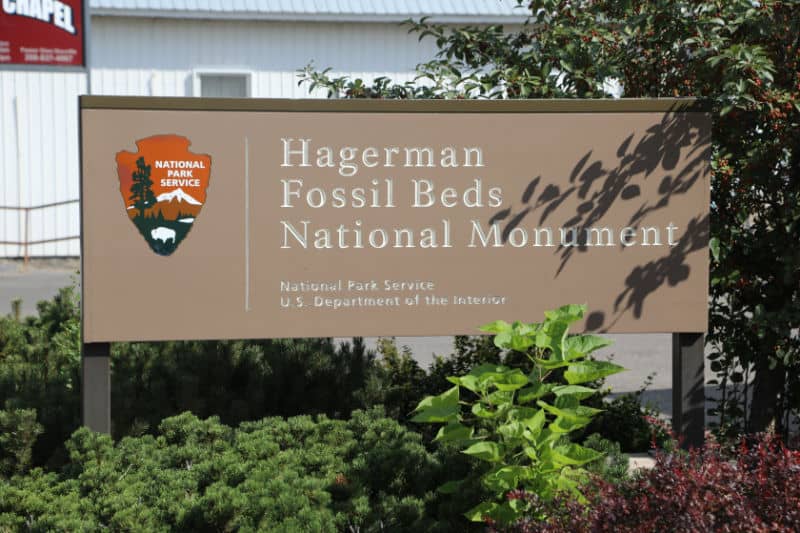
Is Hagerman Fossil Beds National Monument worth visiting?
Yes! You'll undoubtedly enjoy your visit to Hagerman Fossil Beds National Monument if you're interested in fossils or the history of horses.
The monument contains many well-preserved fossils, including the Hagerman horse.
During your visit to the monument, you will also have the opportunity to see several exhibits and interpretive signs that explain what the fossils represent and how they were discovered.
History of Hagerman Fossil Beds National Monument
Hagerman Fossil Beds National Monument is home to the world’s largest and most diverse fossil deposits from the Pliocene Epoch. The Pliocene Epoch refers to a period over 3 million years ago!
The fossil deposits at the Hagerman Fossil Beds National Monument help us understand over 140 types of fauna, flora, and species once present on earth so many millennia ago.
Many fascinating fossils have been discovered at the Hagerman Fossil Beds National Monument. These include the Hagerman horses, saber-tooth cats, mastodons, and the Bone-Crushing canid.
The land protected by the National Park Service at the Hagerman Fossil Beds National Monument protects not only a rich paleontological history but a human history too.
The human story told at Hagerman Fossil Beds National Monument is one of two cultures colliding during the growth of a nation. The Hagerman Fossil Beds National Monument contains a portion of the Oregon Trail.
Hagerman Fossil Beds and the Oregon Trail
The Shoshonean people have called the Hagerman Valley home for thousands of years. The Shoshonean tribes made their camps along the Snake River because of the plentiful supply of Salmon.
In the 1840s, the Shoshonean way of life was interrupted as the Oregon Trail saw increased traffic. The Oregon Trail cuts through the southern part of the National Park. The Hagerman Valley was used as a stop along the Oregon Trail by travelers because of the Snake River.
Initially, the Shoshonean people who lived in the area traded with the emigrants. As the number of people using the Oregon Trail increased, the resources in the area became strained. A further strain was placed on the resources when several emigrants decided to settle permanently in the Hagerman Valley and its surrounds.
Conflict between the settlers and the Shoshonean tribes erupted in the area. In 1868 the United States government sought to end the violence with the Fort Bridger Treaty of 1868. This treaty removed the Shoshonean people from the Hagerman Valley and onto reservations.
By the 1870s, ranchers and gold miners had settled in the area. The area became home to a small community of agricultural farmers. In 1928, one such farmer by the name of Elmer Cook decided to contact the Smithsonian Institution. Cook believed the fossils visible on the bluffs above the Snake River were important.
The Fossils of Hagerman Fossil Bed National Monument
Millions of years before the area was inhabited by humans, the Hagerman Valley was home to hundreds of different species of plants and animals.
During the Pliocene Epoch, the region that now consists of scrub was once wetlands, forests, and grassland. Hagerman Valley was once as diverse ecologically as the species that thrived here.
The fossils found in the Hagerman Fossil Bed were eroding out of the steep bluffs around the Snake River. The fossils found in the Hagerman Valley are believed to contain an entire Pliocene ecosystem.
Excavations began at the Hagerman Fossil Beds National Monument in 1929 by a team from the Smithsonian Institution in Washington, D.C.
The Smithsonian Excavations
Teams from the Smithsonian had active excavations in the area in 1929, 1929, 1930, 1931, and 1934. The park is home to the world’s largest collection of Equus simplicidens, also known as the Hagerman horse. Over 200 Hagerman horse fossils were found at the site.
The discovery of the Hagerman horses has helped scientists to understand the evolution and migration of ancient horses that eventually led to the domestication of the species by humans. The Hagerman Horse is the ancestor to the horses, donkeys, and zebras we see today.
The fossil beds are home to many more species than just the Hagerman horse. The region was home to the Bone-Crusher or Borophagus hilli, a canid resembling a hyena.
These dog-like creatures roamed the Hagerman Valley over 3 million years ago, scavenging and hunting. They were carnivores who could crush bone with their powerful jaws. They have no living ancestors.
During the 1934 excavation, a team discovered a new species in the Hagerman Fossil Beds, the Platygonus Pearcei, an Ancient Peccary.
Although this species of pig-liked hoofed mammals are now extinct, its relatives still roam the earth. The Platygonus Pearcei are related to the Peccaries inhabiting South America and the Southwestern United States.
Excavations in Hagerman Valley also revealed the fossilized remains of the American mastodon. The large mammal lived in the cool forests of the region during the Pliocene. The mastodon is very distantly related to modern elephants and the extinct mammoth.
Today there are no active excavation sites, but the collection of fossils from the surface is ongoing, as is the scientific research.
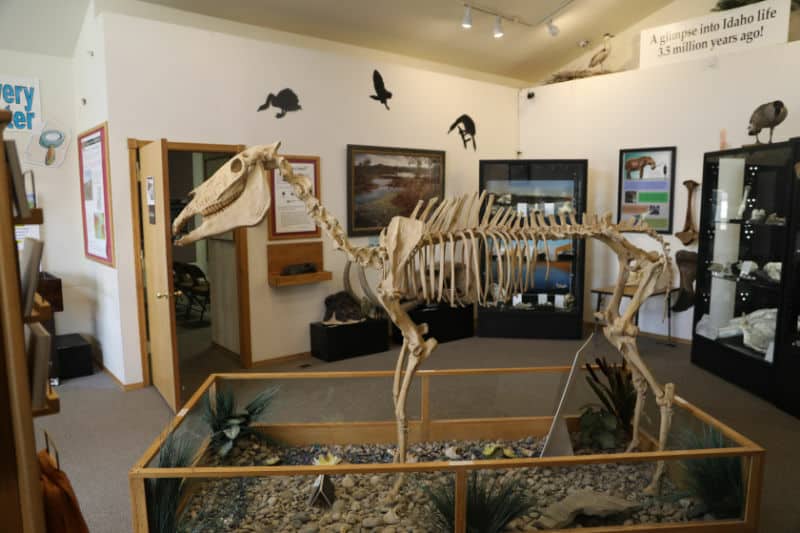
Things to know before your visit to Hagerman Fossil Beds National Monument
Entrance fee
$0.00 - There is no entrance fee to enter the monument or the visitor center.
Learn more about National Park Passes for parks that have an entrance fee.
$80.00 - For the America the Beautiful/National Park Pass. The pass covers entrance fees to all US National Park Sites and over 2,000 Federal Recreation Fee Sites for an entire year and covers everyone in the car for per-vehicle sites and up to 4 adults for per-person sites.

Buy your pass at this link, and REI will donate 10% of pass proceeds to the National Forest Foundation, National Park Foundation, and the U.S. Endowment for Forestry & Communities.
National Park Free Entrance Days -Mark your calendars with the five free entrance days the National Park Service offers annually.
Time Zone
Mountain Standard Time
Pets
Pets are not allowed inside the visitor center, hiking trails, and in undeveloped areas.
Pets are only allowed in parking areas, roads, and walkways.
It is mandatory to keep all pets on leashes of no longer than six feet and dispose of all pet waste appropriately.
Cell Service
There is minimal mobile service, and it depends on what carrier you use. Cellular service is not reliable when hiking. Make sure you check the map, as the visitor center is away from the Fossil Beds.
Park Hours
The park is open from 9 AM to 5 PM.
Wi-Fi
There is no public Wi-Fi available.
Insect Repellent
Insect repellent is always a great idea when outdoors, especially if you are around any body of water.
We use Permethrin Spray on our clothes before our park trips.
Water Bottle
Make sure to bring your own water bottle and plenty of water with you. Plastic water bottles are not sold in the park.
Parking
There is a parking area in front of the visitor center and additional parking along the overlooks.
Food/Restaurants
Make sure and bring water and snacks with you. The town of Hagerman is not large!!!!
Gas
There is no gas station within the park.
Drones
Drones are not permitted within National Park Sites.
National Park Passport Stamps
National Park Passport stamps can be found in the visitor center.
Hagerman Fossil Beds NM is part of the 2019 Passport Stamp Set
We like to use these circle stickers for park stamps so we don't have to bring our passport book with us on every trip.
The National Park Passport Book program is a great way to document all of the parks you have visitied.
You can get Passport Stickers and Annual Stamp Sets to help enhance your Passport Book.
Electric Vehicle Charging
While Hagerman Fossil Beds National Monument does not have electric vehicle charging stations, nearby cities such as Mountain Home, Boise, and Twin Falls do.
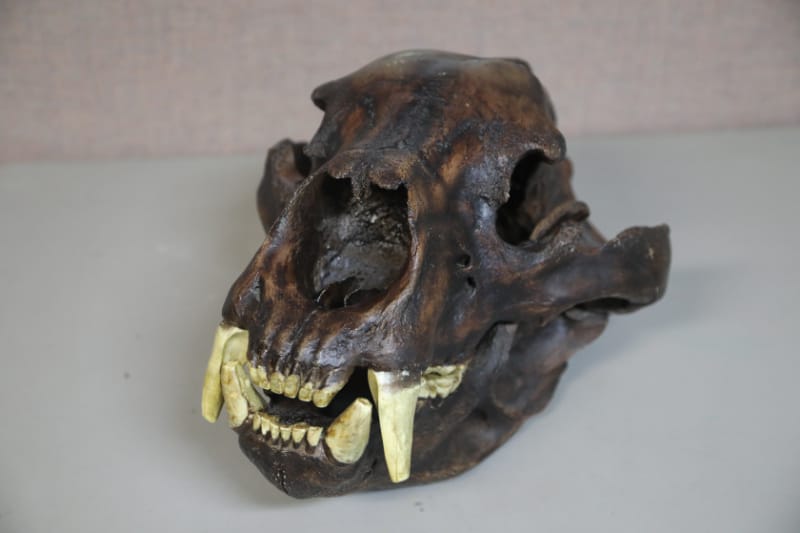
Details about Hagerman Fossil Beds National Monument
Size - 4,400 acres
Check out how the park compares to other National Parks by Size.
Date Established
Established on November 18, 1988
Visitation
In 2021, Hagerman Fossil Beds NM had 8,236 park visitors.
In 2020, Hagerman Fossil Beds NM had 14,113 park visitors.
In 2019, Hagerman Fossil Beds NM had 23,768 park visitors.
Learn more about the most visited and least visited National Parks in the US
National Park Address
221 N State St
Hagerman, ID 83332
Hagerman Fossil Beds NM Visitor Center, 221 North State Street, is located along Highway 30 in the town of Hagerman across from the high school.
Hagerman Fossil Beds Visitor Center is located approximately one and one-half hours from Boise, Idaho and forty minutes from Twin Falls, Idaho.
National Park Map
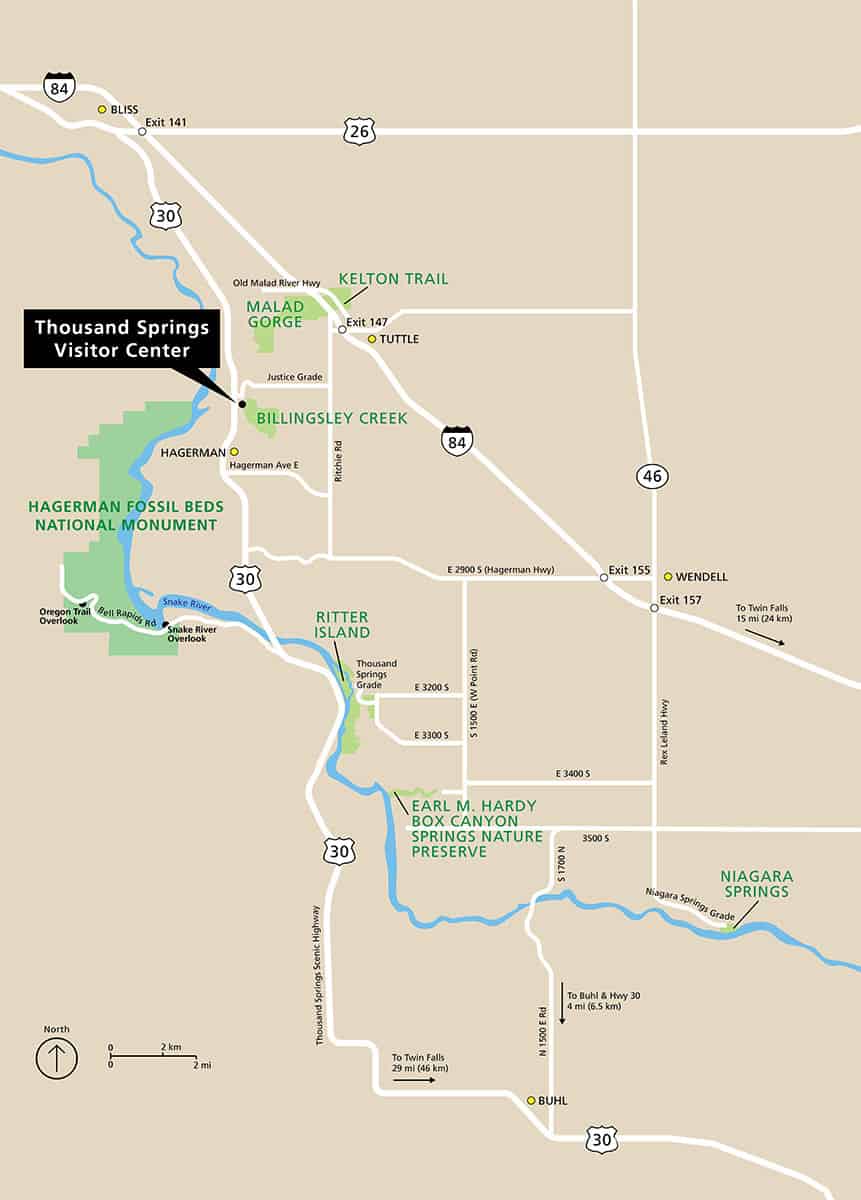
Where is Hagerman Fossil Beds National Monument?
Hagerman Fossil Beds National Monument is located on the west bank of the Snake River, just west of Hagerman and about 100 miles southeast of Boise.
Estimated distance from major cities nearby
- Boise, ID - 86 miles
- Reno, NV - 337 miles
- Portland, OR - 436 miles
- Sacramento, CA - 444 miles
- Las Vegas, NV - 459 miles
- Paradise, NV - 464 miles
- Stockton, CA - 466 miles
- Henderson, NV - 468 miles
- Modesto, CA - 473 miles
- San Francisco, CA - 698 miles
Estimated Distance from nearby National Park
Yellowstone National Park - 297 miles
Grand Teton National Park - 283 miles
Great Basin National Park - 354 miles
Capitol Reef National Park - 463 miles
Arches National Park - 475 miles
Bryce Canyon National Park - 514 miles
Crater Lake National Park - 517 miles
Glacier National Park - 543 miles
Zion National Park - 553 miles
Where is the National Park Visitor Center?
Near the old visitor center is the new visitor center, located along US Highway 30 north of downtown Hagerman.
The new visitor center is located in Thousand Springs State Park.
The new visitor center is located at 17970 US Hwy 30, about 1 mile (1.6 km) north of the town of Hagerman
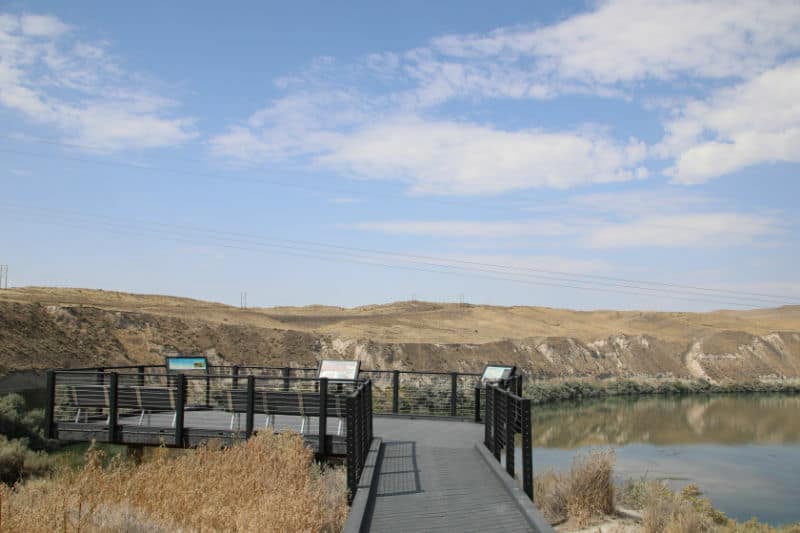
Getting to Hagerman Fossil Beds National Monument
Closest Airports
- Magic Valley Regional Airport
International Airports
- Salt Lake City International Airport
- Spokane International Airport
- Boise Airport
Regional Airports
- Idaho Falls Regional Airport (IDA)
- Ogden-Hinckley Airport (OGD)
- Pocatello Regional Airport (PIH)
- Elko Regional Airport (EKO)
Driving Directions
To the Visitor Center
From Boise, Mountain Home via I-84 East - 1 hour and 29 minutes
- Take the second Bliss exit (#141) and make a right onto Hwy 26 from the exit.
- In a quarter-mile, turn left onto Highway 30. Follow the signs for Hagerman and Buhl. You've gone too far if you pass the gas stations and truck stops.
- Travel south about 7 miles on scenic Highway 30.
- The visitor center will be on the left. Look for a driveway with a sign that reads, "Thousand Springs State Park, Hagerman Fossil Beds National Monument."
From Twin Falls via I-84 West - 41 minutes
- Take Exit #155 for Wendell and Hagerman. Turn left at the exit, toward Hagerman, onto the Hagerman Highway.
- Travel about 10 miles on the Hagerman Hwy (E 2950 S.) Use caution, watching for agricultural vehicles and crossing wildlife.
- The Hagerman Highway ends at its intersection with Hwy 30. Turn right on Hwy 30.
- Travel about 3 miles north on Hwy 30, through downtown Hagerman. Be aware of changing speed limits and cross traffic, especially through downtown.
- About one mile north of downtown Hagerman, look for a driveway on the right, marked with a sign for "Thousand Springs State Park, Hagerman Fossil Beds State Park".
From Twin Falls, Filer, Buhl via US Highway 30 - 1 hour
- Leave Twin Falls on US Hwy 30, driving west toward Filer.
- Stay on Hwy 30 for about 36 miles.
- Pay close attention to signage in Buhl, where the highway changes directions as it passes through town. Slow down and use caution while traveling through the busy downtown Buhl area.
- As you approach Hagerman, highway signs will note a left turn onto Bell Rapids Road, where the monument's trails and scenic overlooks are located. Continue straight on Hwy 30, toward Hagerman, to reach the visitor center. The visitor center is not located on the park grounds.
- About one mile north of downtown Hagerman, look for a driveway on the right, marked with a sign for "Thousand Springs State Park, Hagerman Fossil Beds State Park".
From Jackpot, Nevada via Hwy 93 - 1 hour and 20 minutes
- Travel north on US Hwy 93 from Jackpot.
- Travel about 42 miles toward Twin Falls, Idaho.
- Follow signs to merge onto US Hwy 30, heading west.
- Continue on Hwy 30 for about 16 miles.
- Pay close attention to signage in Buhl, where the highway changes directions as it passes through town. Slow down and use caution while traveling through the busy downtown Buhl area.
- As you approach Hagerman, highway signs will note a left turn onto Bell Rapids Road, where the monument's trails and scenic overlooks are located. Continue straight on Hwy 30, toward Hagerman, to reach the visitor center. The visitor center is not located on the park grounds.
- About one mile north of downtown Hagerman, look for a driveway on the right, marked with a sign for "Thousand Springs State Park, Hagerman Fossil Beds State Park".
To the Monument's Scenic Overlooks and Trails from the Visitor Center
- From the Thousand Springs Visitor Center, turn left (south) onto US Hwy 30.
- Drive south for about six miles, through the town of Hagerman, past farmland, and across the Snake River.
- Just after you cross the bridge over the river, turn right onto Bell Rapids Road (look for signs pointing to Hagerman Fossil Beds.)
- Continue about 2.5 miles on Bell Rapids Road to the Snake River Overlook.
- Continue another 2.5 miles up the road to the Oregon Trail Overlook.
- There are no other public access areas in the monument past the Oregon Trail Overlook.
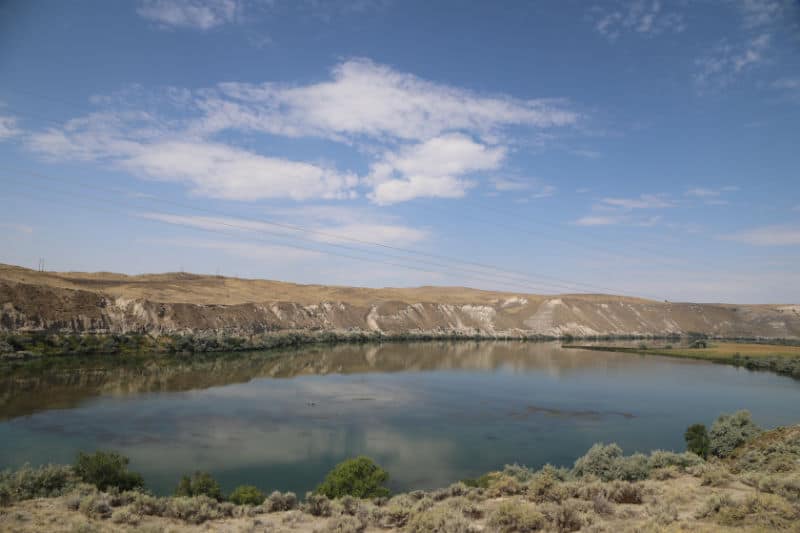
Best time to visit Hagerman Fossil Beds National Monument
It is best visited in spring and summer when the weather is warm, and there are plenty of activities to enjoy.
Weather and Seasons
Hagerman experiences various weather conditions throughout the year, including hot, dry summers and cold, snowy winters.
The hottest weather is from June 15th to September 11th, wherein the average daily high temperature exceeds 82 degrees.
The coldest weather is from November 18th to February 21st, with an average high temperature of under 47 degrees.
The snowiest weather typically occurs between November 16 and February 16, when it snows at least 1 inch a month, with the most snowfall occurring in December at 2.9 inches.
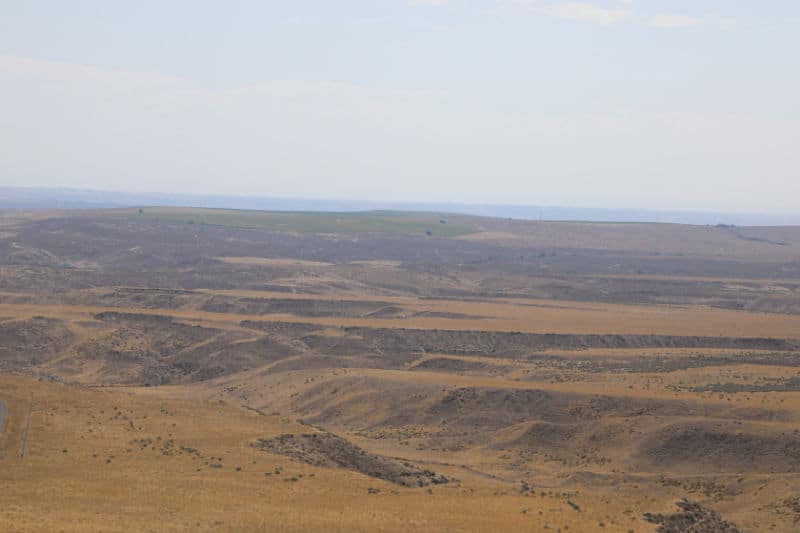
Best Things to do in Hagerman Fossil Beds National Monument
We suggest planning at least a couple of hours to visit the park and explore the visitor center and Oregon Trail ruts.
Hagerman Fossil Beds Visitor Center
The Hagerman Fossil Beds Visitor Center is located in the heart of Hagerman, Idaho. The visitor center is fairly small but, they do have a great mounted skeleton of the world-famous Hagerman Horse, a small store, and wonderful staff to answer all of your questions.
They were a wealth of information not only on Hagerman Fossil Beds but also the nearby parks and historic trails. They supplied us with wonderful information and made sure all of our questions were answered
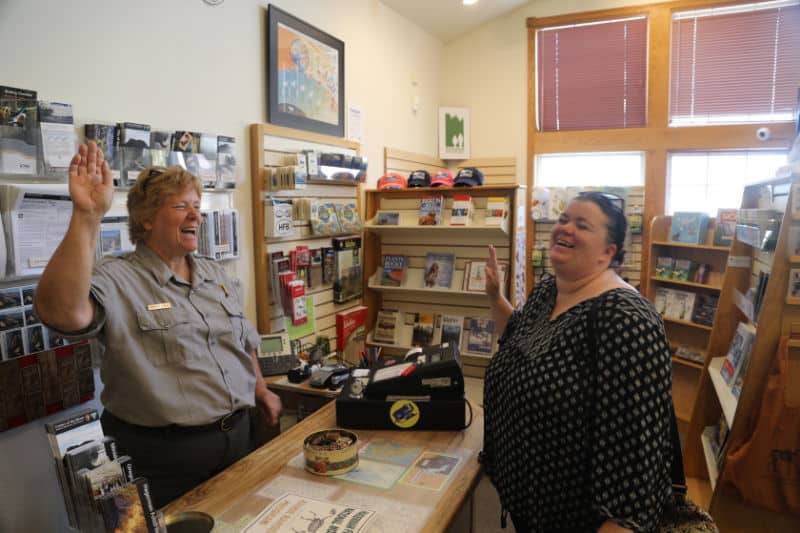
Junior Ranger Program
The Hagerman Fossil Beds Junior Ranger pamphlet will take anywhere from 30 to 60 minutes depending on the age of the participant.
Look for the Oregon Trail Ruts
Make sure and look for the Oregon Trail Ruts when you visit the overlooks. Hagerman Fossil Beds is on the Oregon Trail National Historic Trail so this is a great place to see the historic Oregon Trail.
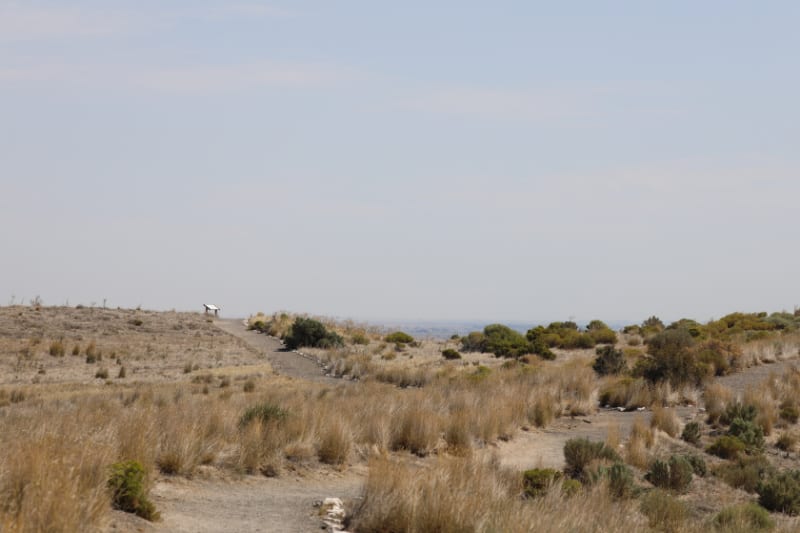
Hiking in Hagerman Fossil Beds National Monument
If you plan on doing some hiking while in the park be prepared for hot weather, snakes, ticks, and other assorted bugs and critters. The park has a few designated walking areas for visitors.
There is no off-trail hiking or exploring to help protect the fossil beds. Make sure and bring your ten essentials with you if you plan to explore the park.
Make sure you are prepared for the sun. There is very little shade at the overlooks or along the hiking trails.
There are outhouses at each of the overlooks. We found them to be very clean during our visit.
Emigrant Trail
You can explore the 3 miles each way Emigrant Trail while out in the park.
One tip is to park a car at the lower parking lot and then drive to the top lot (Oregon Trail Overlook) and hike down to the lower lot. The trail is a much easier hike on the way down than all the way up.
Be prepared for the blazing sun with no real shade along with the potential of rattlesnakes, ticks, and scorpions.
The trail runs along a portion of the historic Oregon Trail.
Hagerman Fossil Beds is located on the Thousand Springs Scenic Byway which showcases the history and geology of the Snake River Canyon. The scenic byway is 67.8 miles long and estimated to take 1.5 hours to drive.
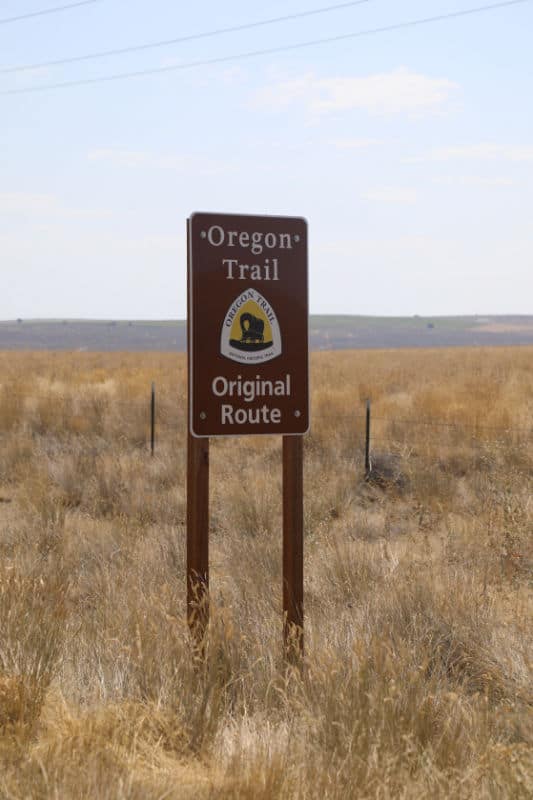
Travel Tips
Make sure and bring water and snacks with you. The town of Hagerman is not large!!!!
Make sure you are prepared for the sun. There is very little shade at the overlooks or along the hiking trails.
There are outhouses at each of the overlooks. We found them to be very clean during our visit.
Don't forget to pack
Insect repellent is always a great idea outdoors, especially around any body of water.
We use Permethrin Spray on our clothes before our park trips. Please read my article on preventing biting insects while enjoying the outdoors.
Sunscreen - I buy environmentally friendly sunscreen whenever possible because you inevitably pull it out at the beach.
Bring your water bottle and plenty of water with you. Plastic water bottles are not sold in the park.
Sunglasses - I always bring sunglasses with me. I personally love Goodr sunglasses because they are lightweight, durable, and have awesome National Park Designs from several National Parks like Joshua Tree, Yellowstone, Hawaii Volcanoes, Acadia, Denali, and more!
Click here to get your National Parks Edition of Goodr Sunglasses!
Binoculars/Spotting Scope - These will help spot birds and wildlife and make them easier to identify. We tend to see waterfowl in the distance, and they are always just a bit too far to identify them without binoculars.
How to beat the crowds in Hagerman Fossil Beds NM?
We did not experience any crowds during our visit to the park.
Where to stay when visiting
There are no National Park Lodges within the park.
Nearby lodging includes:
Fairfield Inn & Suites by Marriott Twin Falls - We have stayed at this hotel a few times and enjoyed it every time. Free breakfast, a grocery/convenience store, and a terrace are just a few of the amenities provided at Fairfield Inn & Suites by Marriott Twin Falls. For some rest and relaxation, visit the hot tub. Stay connected with free in-room Wi-Fi, and guests can find other amenities such as dry cleaning/laundry services and a fireplace in the lobby.
Comfort Inn & Suites Jerome - Twin Falls - At Comfort Inn & Suites Jerome - Twin Falls, you can look forward to a free breakfast buffet, a grocery/convenience store, and laundry facilities. For some rest and relaxation, visit the hot tub. Free in-room Wi-Fi is available to all guests, along with a gym and a 24-hour business center.
Camping
Hagerman RV Village - 60 grassy pull-through sites, 75 feet long with room for slide outs with 20/30/50 amp service. They also have camper cabins.
1000 Springs Resort - 18 RV sites and cabins. Their website suggests calling at least a month ahead to confirm availability.

For a fun adventure check out Escape Campervans. These campervans have built in beds, kitchen area with refrigerators, and more. You can have them fully set up with kitchen supplies, bedding, and other fun extras. They are painted with epic designs you can't miss!
Escape Campervans has offices in Vancouver, Seattle, Portland, San Francisco, Las Vegas, Los Angeles, Phoenix, Salt Lake City, Denver, New York, and Orlando
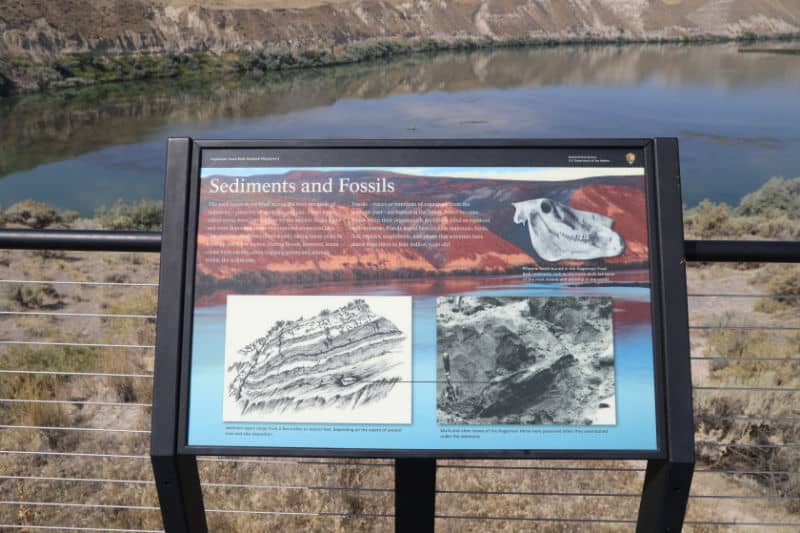
Parks Near Hagerman Fossil Beds National Monument
Minidoka National Historic Site - 40 miles
City of Rocks National Reserve - 104 miles
Craters of the Moon National Monument and Preserve - 109 miles
Golden Spike National Historic Site (Utah) - 185 miles
Fossil Butte National Monument (Wyoming) - 293 miles
Check out all of the National Monuments managed by the NPS
Check out all of the Idaho National Parks along with National Parks in Wyoming, Utah National Parks, Washington National Parks, National Parks in Oregon, National Parks in Nevada, and Montana National Parks
Make sure to check out Eagle Island State Park near Boise for a great day trip!
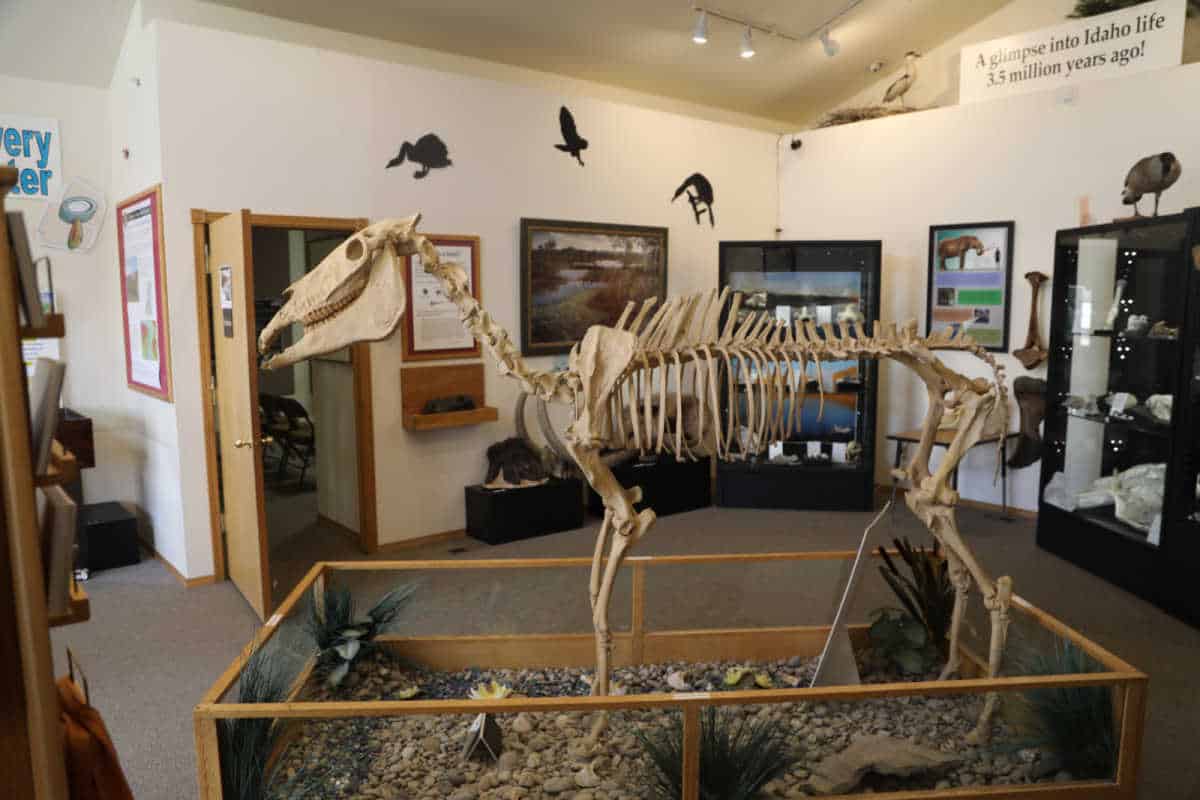
Make sure to follow Park Ranger John on Facebook, Instagram, Pinterest, and TikTok





Leave a Reply